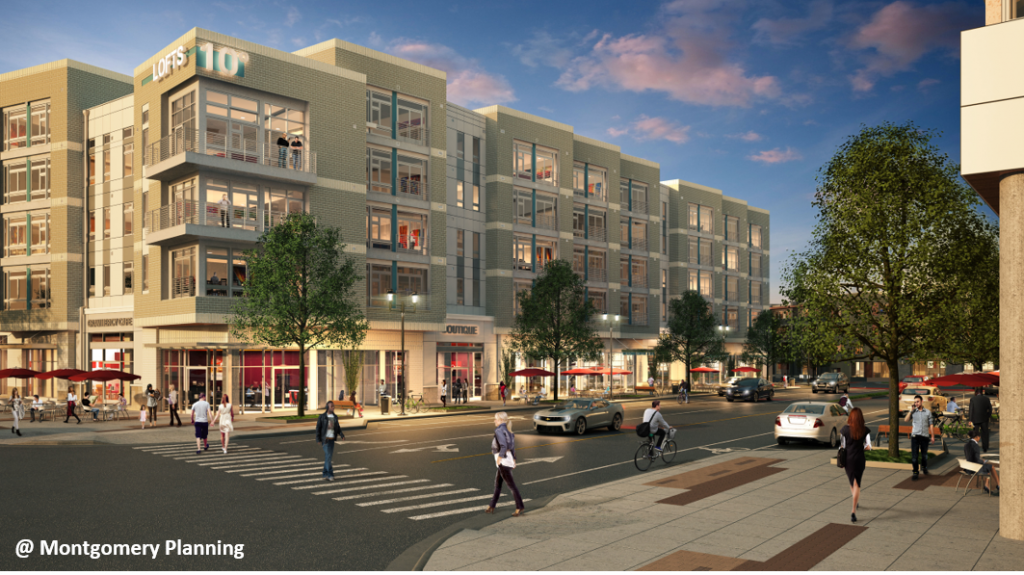
1. Presentation
Recently, the location of schools has been selected according of the price of the plot, not as a result of the population density. Furthermore, there is a growing tendency to create bigger schools as a way to accommodate more students with less buildings. This method hinders access to schools, demanding the use of a car and, hence, hindering the classes with financial difficulties.
This measure uses urban planning interventions to facilitate access to schools. The interventions aim to promote family density and diversity around schools and vice-versa.
2. Objectives
- Reducing the dependence of the private vehicle on this type of commuting movements, and promote the use of the bicycle.
- Creating more inclusive and egalitarian schools.
3. Measure’s Importance
By creating the necessary conditions for commuting by bicycle, it will contribute to traffic congestion reduction, pollution reduction, and improvements on clean transport, road safety and urban space in general. Simultaneously, when promoting cycling among the youngest, the importance of sustainable mobility is perceived from an early age.
1. Good Practices
– Apply strategic and comprehensive plans, instead of implementing isolated decisions (See Restriction and rectification of urban sprawl, Connecting people and public transportation, Car parking restrictions).
– Creating different types of housing for a diverse population in age, number and income.
– Promoting compact and accessible neighbourhoods, accessible on foot and by bicycle.
– Providing different options for sustainable transportation modes.
– Encourage the participation of citizens and actors involved in planning decisions.
– Ensure that land use and transport policies are coordinated.
– Encourage cooperation between public and private entities to ensure the development of these areas.
– Explain the principles behind the measures to clarify their importance and impacts (See Information).
– Monitor citizens’ adaptation to changes and reformulate measures to respond to their needs without compromising sustainable ideals (See Management, Monitoring and Maintenance).
2. Actions
 | Bring schools closer to people Place schools in high density areas to increase the number of people living in walking and cycling distances. It demands that the placement of new schools prioritizes the location of the population and existing transport infrastructures over financial issues. (See Restriction and rectification of urban sprawl, specially the Actions: Prioritize diverse constructions in non-consolidated areas and Renovate fiscal, planning and managing practices). |
 | Bring people closer to schools Promote the concentration of families near schools to increase the number of people living in walking and cycling distances. It demands that the construction of residences prioritizes the location of schools and existing transport infrastructures over financial issues. It is important to remember that the constructed residences should consider diversity issues, namely that the neighbourhoods should be dense but with diverse housing typologies, allowing them to be acquired by families from different socioeconomic classes (See Restriction and rectification of urban sprawl, specially the Actions: Prioritize diverse constructions in non-consolidated areas and Renovate fiscal, planning and managing practices). When creating housing, it is also important to create mixed use areas, with other services and businesses in its proximity (See Maximize accessibility in Restriction and rectification of urban sprawl). |
 | Avoid concentration in mega institutions Creation of several small / medium-sized schools into the required areas as opposed to a big school infrastructure. This enables non-motorized access for more families. |
1. Impacts
 | Mobility system efficiency By promoting school accessibility, families dependent on cars would decrease, reducing car congestion and improving the mobility system. |
 | Livable streets Promoting accessibility results in more people walking and cycling and less automobile congestion, creating safer and more enjoyable public spaces. |
 | Protection of the environment Promoting non-motorized means of mobility reduces pollution. |
 | Inclusion, equity and accessibility If the applied measures take into account the risks of real estate speculation and apply the necessary guidelines to avoid them, the promotion of urban density will allow the creation of different types of housing, accessible by people of different social and economic classes. |
 | Safety and comfort Reducing car traffic and promoting pedestrian and cycling mobility reduces the probability of accidents and increases neighbourhood self-surveillance. |
 | Economic value No impact. |
 | Awareness and acceptability By promoting cycling among the young, the importance of sustainable mobility is perceived from an early age. |
Legend:
| Very positive | Positive | Neutral | Negative | Very negative |
2. Barriers
 | Legal There may be legal barriers hindering construction in urban voids and densification. |
 | Finance Will have planning and construction costs. These can be shared between private investors and public authorities. |
 | Governance There may be some barriers and different objectives between government entities and companies involved in building processes. |
 | Political acceptability There may be resistance in creating barriers to real-estate speculation. |
 | Public acceptability There may be resistance in creating barriers to automobile circulation or allowing the construction of infrastructures that will decrease the car parking supply and other services. However, barriers could be overcome with comprehensive information campaigns. |
 | Technical feasibility It requires a multidisciplinary study of the area where it is intended to act. In principle, the government entities involved have teams with the necessary expertise or the means to contact them. |
Legend:
| No barrier | Minimum barrier | Moderate barrier | Significant barrier |
3. Budget
| Area | Measure | Unit | Cost | Implementation year |
| Moura, Beja (Portugal) | Acquisition of services to prepare the Municipal Master Plan (PDM) review | 74 980,00 € | 2019 | |
| Loulé, Faro (Portugal) | Acquisition of advisory services in urban planning and administration | 19 400,00 € | 2018 | |
| Paredes de Coura, Viana do castelo (Portugal) | Provision of the service of elaboration of the Local Housing Strategy of Paredes de Coura, within the framework of the Programme to support access to housing | 16 900,00 € | 2019 | |
| Vila Verde, Braga (Portugal) | Technical assistance in the area of urban rehabilitation and implementation of the strategic urban rehabilitation programme | 26 500,00 € | 2019 |
Case study 1: Shady Grove, Montgomery County, MD (U.S.A.)

The Montgomery County, in Maryland, has been implementing a series of measures to make the city more sustainable since 2006. Among them is the Shady Grove project, which plans to transform the area near the subway station into a community of diversified uses. The plan integrates the creation of multifunctional buildings, including residences, shops, offices and services with easy pedestrian and cycling access from the metro station. From this area, it is possible to walk or cycle to the city services area, which includes schools.
A proportion of these dwellings are allocated to the workforce of the nearest industries and trades, ensuring accessibility does not dependent on the private vehicles.
Impact:
 | Mobility system efficiency Reducing dependence on private vehicles and providing easy access to the metro reduces congestion and improves car and bus efficiency. |
 | Livable streets The streets are designed to allow terraces and pedestrian and cycle paths. In addition, pedestrian and cycling leisure routes that pass through the neighbourhood are implemented. |
 | Protection of the environment Reducing dependence on the private vehicles reduces pollution. At the same time, the plan incorporates an ecological plan to protect existing natural resources and sustainable buildings. |
 | Inclusion, equity and accessibility Providing housing at different costs and methods of payment, allows the inclusion of different social groups. |
 | Safety and comfort Reducing the dependence of private vehicles and designing the public space to allow different means of mobility, lowers the risk of accidents and improves safety and comfort for cyclists and pedestrians. |
 | Economic value The integration of mixed-use zones that include commerce, offices, services and industries enhances the neighbourhood’s economic resilience. |
 | Awareness and acceptability By promoting cycling among the young, the importance of sustainable mobility is perceived from an early age. |
Legend:
| Very positive | Positive | Neutral | Negative | Very negative |
IMPIC. Base: Contratos públicos online. Accessed 17 June 2019. Available at: http://www.base.gov.pt/Base/pt
Montgomery County MD (2018) Shady Grove Sector Plan. Accessed 17 June 2019. Available at: https://montgomeryplanning.org/planning/communities/area-2/shady-grove/
NLC (2017) Urban Infill. Available at: https://www.nlc.org/resource/urban-infill-brownfields-redevelopment
VTPI. Victoria Transport Policy Institute (2018). Location Efficient Development and Mortgages. Online Transportation Demand Management (TDM) Encyclopedia. Accessed 17 June 2019. Available at: https://www.vtpi.org/tdm/tdm22.htm
VTPI. Victoria Transport Policy Institute (2018). Smart Growth Reforms. Online Transportation Demand Management (TDM) Encyclopedia. Accessed 17 June 2019. Available at: https://www.vtpi.org/tdm/tdm95.htm#_Toc120587097
VTPI. Victoria Transport Policy Institute (2018). Smart Growth. Online Transportation Demand Management (TDM) Encyclopedia. Accessed 17 June 2019. Available at: https://www.vtpi.org/tdm/tdm38.htm
VTPI. Victoria Transport Policy Institute (2018). Land Use Density and Clustering. Online Transportation Demand Management (TDM) Encyclopedia. Accessed 17 June 2019. Available at: https://www.vtpi.org/tdm/tdm81.htm
VTPI. Victoria Transport Policy Institute (2018). Accessibility. Online Transportation Demand Management (TDM) Encyclopedia. Accessed 17 June 2019. Available at: https://www.vtpi.org/tdm/tdm84.htm
